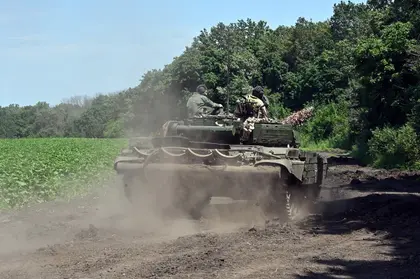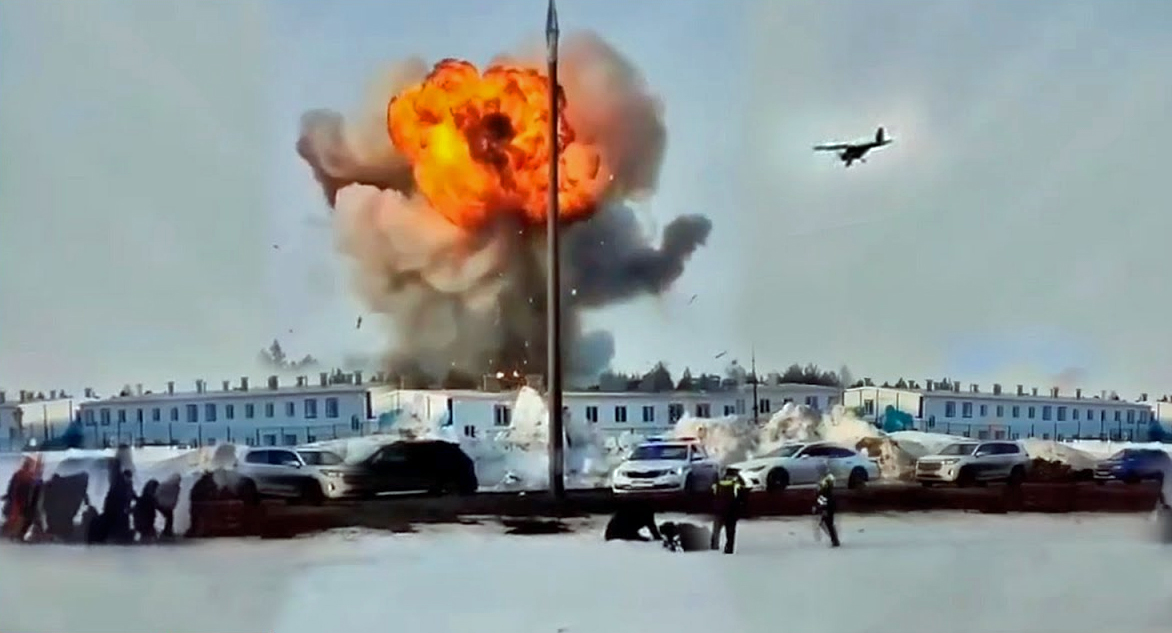Carl von Clausewitz, the 19th century Prussian general and author of On War, insightfully argued in his book that “War is the realm of uncertainty; three quarters of the factors on which action in war is based are wrapped in a fog of greater or lesser uncertainty.” Today, we commonly refer to Clausewitz’s dictum as the “Fog of War.”
Social media – Twitter, Telegram, Reddit and the like – has only thickened that fog inwardly and outwardly on the battlefield. On any given day at any given minute and at any given second, you can find competing posts claiming Ukraine is winning, Kyiv is losing and that Russian President Vladimir Putin’s three-day ”special military operation” is going masterfully according to plan 17 months later.
- See the most recently published Ukraine news reports from today.
- See the most contemporary Ukraine news reports for today.
JOIN US ON TELEGRAM
Follow our coverage of the war on the @Kyivpost_official.
Today, arguably, given the heated disinformation wars and competing narratives being played out in the ether above Ukraine and across the four corners of the globe, Clausewitz’s maxim has morphed into a far denser and ever widening “Nebula of War.”
“War is the realm of uncertainty… Factors on which action in war is based are wrapped in a fog…” – Carl von Clausewitz
In Clausewitz’s time, the “fog” of war was largely limited to battlefield commanders being detached from the pointy ends of spears doing the actual fighting – and the flanks and centers of companies, battalions and brigades struggling to stay in communication and sync with each other.

Moldova Investigates Russian Missile, Romania Says No Airspace Violation
Now, frequently, rivaling and dissonant dispatches from battling friends and enemies alike often reach capital cities before the non-commissioned officers (NCO), lieutenants and captains engaged in battle can report back up the line to their chain of command.
Along the way, those cell phone calls, text messages, Telegram posts, and videos captured by loitering drones – some intercepted, others planted – are quickly seized upon by war commentators, governments, and individuals to drive false or competing narratives about the status of the war in Ukraine.
The “Nebula of War,” as a result keeps growing exponentially darker. Attempts to dissipate it to achieve clarity of what is happening on the battlefield are becoming ever more difficult and challenging.
Ukraine’s ongoing counteroffensive is a case in point of how snippets of information gleaned from social media and open-source intelligence (OSINT) are used to create dissent, foment fear and mislead the public as to what is actually happening on the battlefield.
Podcasts, Twitter Spaces, and Telegram threads quickly amplify that flow of real-time information – much of it intentionally twisted, out of context and often unconfirmed – across the social media ecosphere.
In practical terms, the internet cloud – what Microsoft defines as “a vast network of remote servers around the globe which are hooked together” – is fast becoming the unwitting digital host of this modern-day ‘Nebula of War.’ Its detached and undiscerning algorithms quickly disseminated information and disinformation on a global scale.
As a result, it is also becoming an instrument of war – one that is intended by nefarious state and individual actors to undermine support for Ukraine’s fight to defend itself from Russia.
In the opening days of the first phase of Kyiv’s counteroffensive much was made on social media of an early engagement in the Zaporizhzhia Region wherein Ukraine clearly suffered company-level size losses in armor and equipment as reported by the Russian Defense Ministry in a drone video.
Russian state-controlled media quickly picked up on the footage and began showing different angles and misleading viewers that they were multiple incidents and therefore indicative of early widespread failure of Ukraine’s counteroffensive.
During that same timeframe in early June, Russia’s foreign ministry fell victim to its own rush to interpret snippets of information flowing unfiltered and analyzed from Ukraine. The Russian Embassy in Washington gleefully proclaimed that “its military blew up some of Ukraine’s most fearsome tanks.”
Not wanting to be left out, the Russian Defense Ministry then posted video proof. Or so they thought. In reality, all the Kremlin had destroyed in a farcical battle worthy of the old “Green Acres” American situation comedy was several Ukrainian tractors.
Remain resolved and Ukraine will safely exit this ‘Nebula of War’ in due course and emerge victorious.
The ’Nebula of War’ clearly has become all encompassing – and yet still, troublingly, it is far too beguiling to many in the West.
Its greatest damage, perhaps, is how it is used in conjunction with other data points to create and spread the false narrative that Ukraine is losing and will necessarily lose the war. Consider a July 8 Tweet in response to a podcast they listened to. The poster claims “So the narrative that the Ukraine is winning is a joke. They are outmanned and outgunned.”
Yet, if you listen to the clip of the podcast the poster provided, there is a rush to judgment that Ukraine cannot win. This, despite Ukraine only being at the beginning of the beginning phase of its counteroffensive.
Wittingly or not, many of the podcasts talking points risk appearing to be in alignment with Russian disinformation spread by the Kremlin and other state-controlled actors. For example, the podcast claims there are 10,000 Ukrainian casualties and that one-quarter of all Ukraine’s armor has been destroyed since Kyiv’s counteroffensive began.
Military analysts fall victim as well to this same modern metamorphosis of Clausewitz’s “Fog of War” maxim. Especially, it seems, if they are opposed to NATO aiding Ukraine.
The same tendency to rush to judgment in the podcast can be evidenced in how many war commentators are reacting to the Biden administration’s decision to greenlight cluster bombs to Ukraine. Some are arguing it means Kyiv’s counterattack has failed.
In reality, as we pointed out on Boyd Matheson’s Inside Sources show on KSL News in Salt Lake City, Utah, there could be a variety of explanations. Ukraine might well have deemed Russian defensive lines were too costly to assault absent better munitions to clear them of Russian defenders.
Or the cluster bombs could be intended to send a signal to Putin that the United States will not allow Ukraine to be drawn into a war of attrition in the Donbas given the reported amassing of 180,000 Russian reinforcement troops there.
Accordingly, Biden’s decision to equip Zelensky with cluster bombs does not mean Ukraine is necessarily losing or that Ukraine’s counteroffensive goals are not achievable. To prematurely conclude that is to fall victim – whether as a military analyst, podcast host or as an individual – to the darkening ‘Nebula of War’ that is hovering over the battlefields as Ukrainians fight to expel Russians from all its territory.
However, there is a real cost to be paid in Ukraine for when the West falls victim to false narratives stemming from the ‘Nebula of War.’ Maintaining troop morale on the battlefields while fighting bloody close-in encounters and civilian morale on the home front enduring Putin’s illegal strikes on city centers and populations are vital to Ukraine’s overall war effort.
Deliberate disinformation attempts to smear Ukrainian successes on the battlefield are intended as to cast domestic and global doubt on the war’s outcome. Sourcing and validating Russia’s claims are challenging. Simply taking their words, no matter how frequently they repeat their version of the story and amplify it through Moscow’s global disinformation channels, requires the West and Ukraine to remain ever vigilant.
As a friend often pointedly reminds us, try as they might, the “Russians are not that good,” while admonishing to “believe what you see, not what you are told.” Strategic patience wins out.
Avoiding a rush to judgment based on 24-hour news cycles is key, especially as it is a well-known Western vulnerability the Kremlin works hard at exploiting.
The Russian clouds hovering over all Ukrainians are dark enough. There is no need for the West to add to them by falling for Russian disinformation. Maintaining Ukrainian troop and civilian morale is what is paramount now, and no doubt, Zelensky’s courageous decision to travel to Snake Island was a valiant effort to do just that – and to deliver the same message its defenders did early in the war to Russia’s navy in refusing to surrender.
Clouds eventually dissipate and so too will the clouds and fogs of war hovering over Ukraine. Meanwhile, it is important that we work to disperse the disinformation clouds distorting the West’s understanding of where Kyiv’s counteroffensive is currently at.
Be patient and steady at the helm and stay even keel like good pilots do. Not too high. Not too low. Stay level, remain resolved and Ukraine will safely exit this ‘Nebula of War’ in due course and emerge victorious against the Russian military.
Copyright 2023. Mark C. Toth and Jonathan E. Sweet. All rights reserved.
The views expressed are the author’s and not necessarily those of Kyiv Post.
You can also highlight the text and press Ctrl + Enter






